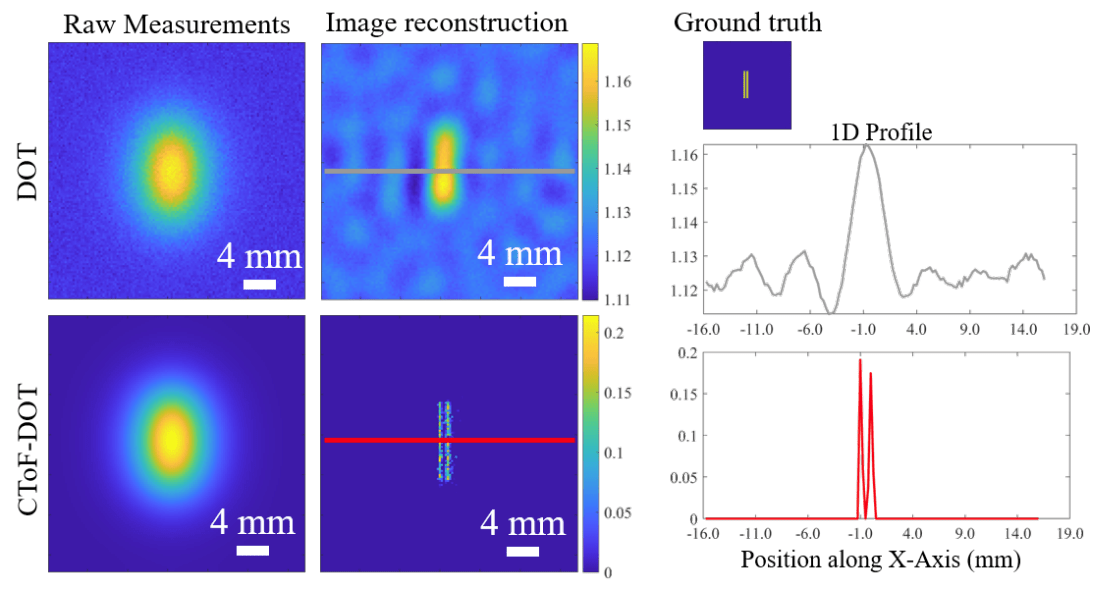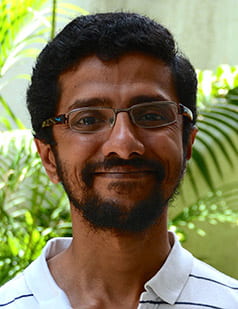Confocal Time-of-flight Diffuse Optical Tomography
Diffuse Optical Tomography
Light scattering by tissue severely limits how deep beneath the surface one can image, and the spatial resolution one can obtain from these images. Diffuse optical tomography (DOT) is one of the most powerful techniques for imaging deep within tissue – well beyond the conventional ∼10-15 mean scattering lengths tolerated by ballistic imaging techniques such as confocal and two-photon microscopy. Unfortunately, existing DOT systems are limited, achieving only centimeter-scale resolution. Furthermore, they suffer from slow acquisition times and slow reconstruction speeds making real-time imaging infeasible.

Experimental setup to test CToF-DOT.
New Dimension of Measurements
More Info
We demonstrate that exploiting this additional transient dimension (by capturing transient histograms between every source-detector pair), provides a sufficient increase in measurement diversity to obtain mm spatial resolution even in the diffusive regime.
Rapid Acquisition
More Info
We propose that multiplexed acquisition, wherein multiple light sources are ’on’ simultaneously, improves measurement SNR. With a reconstruction algorithm that can de-multiplex these measurements, we show that source multiplexing can provide a 4×-10× reduction in capture time compared to traditional sequential DOT.
Real-time Reconstruction
More Info
We propose a novel convolutional approximation for multiplexed (and nonmultiplexed), confocal time-of-flight diffuse optical tomography and utilize this approximation to develop a fast, real-time reconstruction algorithm (which is a 100×-1000× speedup).
Confocal Time-of-flight DOT
We show that time-of-flight diffuse optical tomography (ToF-DOT) and its confocal variant (CToF-DOT), by exploiting the photon travel time information, allow us to achieve millimeter spatial resolution in the highly scattered diffusion regime (> 50 mean free paths). In addition, we demonstrate two additional innovations: focusing on confocal measurements, and multiplexing the illumination sources allow us to significantly reduce the measurement acquisition time. Finally, we rely on a novel convolutional approximation that allows us to develop a fast reconstruction algorithm, achieving a 100× speedup in reconstruction time compared to traditional DOT reconstruction techniques. Together, we believe that these technical advances serve as the first step towards real-time, millimeter resolution, deep tissue imaging using DOT

Simulated spatial resolution of CTOF-DoT

Resolution test with experimental data

Simulated and Experimental Multiplexing Results

Fluorescence imaging with CToF-DOT
People

Yongyi Zhao

Ankit Raghuram
Hyun K. Kim
Andreas H. Hielscher

Jacob T. Robinson

Ashok Veeraraghavan
